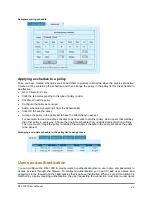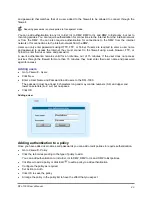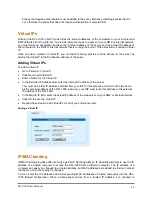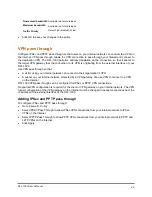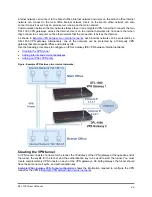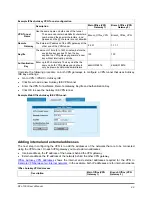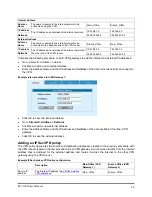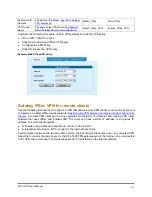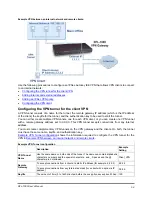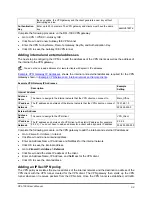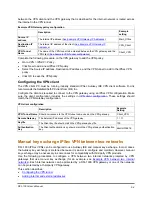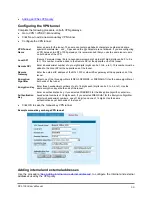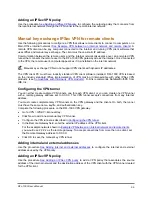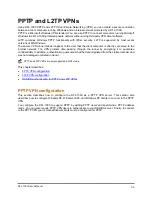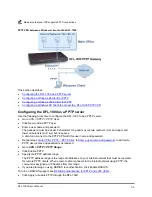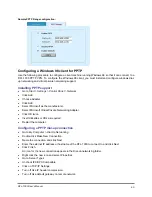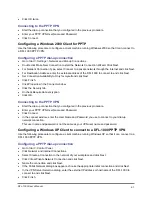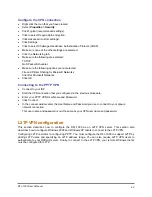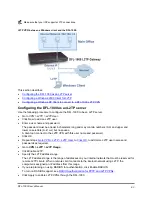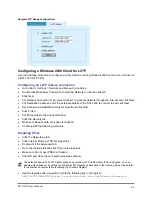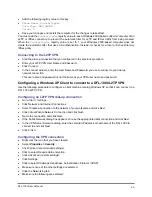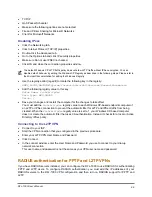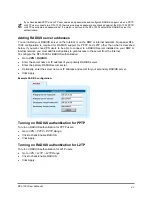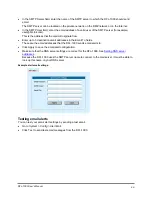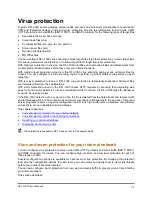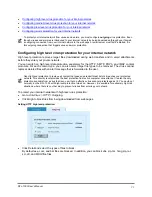
Adding an IPSec VPN policy
See Adding an IPSec VPN policy
to configure the outgoing policy that connects from
the local internal network through the VPN tunnel to the remote internal network.
Manual key exchange IPSec VPN for remote clients
Use the following procedures to configure a VPN that allows remote clients to connect to computers on a
Main Office internal network (
See Example VPN between an internal network and remote clients
remote VPN client can be any computer connected to the Internet and running VPN client software that
uses IPSec and manual key exchange. The client must have a static IP address.
Communication between the remote users and the internal network takes place over an encrypted VPN
tunnel that connects the remote user to the DFL-1000 VPN gateway across the Internet. Once connected
to the VPN, the remote user's computer appears as if it is installed on the internal network.
Manual key exchange VPNs do not support VPN clients with dynamic IP addresses.
The VPN client PC must have industry standard VPN client software installed. DFL-1000 VPN is based
on the industry standard IPSec implementation of VPN making it interoperable with other IPSec VPN
products (see
Compatibility with third-party VPN products
). D-Link recommends SafeNet/Soft-PK from
IRE, Inc.
Configuring the VPN tunnel
You can either create multiple VPN tunnels, one for each VPN client, or you can create one VPN tunnel
with a remote gateway address set to 0.0.0.0. This VPN tunnel accepts connections from any Internet
address.
You must create complementary VPN tunnels on the VPN gateway and the clients. On both, the tunnel
must have the same name, keylife, and authentication key.
Complete the following procedure on the DFL-1000 VPN gateway.
•
Go to
VPN > IPSEC > Manual Key
.
•
Click New to add a new manual key VPN tunnel.
•
Configure the VPN tunnel as described in
.
•
In the Remote Gateway field, enter the external IP address of the VPN client.
For the example network shown in
Example VPN between an internal network and remote clients
,
you would use 2.2.2.2 as the remote gateway. To accept connections from more than one client, set
the Remote Gateway address to 0.0.0.0.
•
Click OK to save the manual key VPN tunnel.
Adding internal and external addresses
See Adding internal and external addresses
to configure the internal and external
addresses used by the VPN policy.
Adding an IPSec VPN policy
Use the procedure
See Adding an IPSec VPN policy
to add a VPN policy that associates the source
address of the internal network and the destination address of the VPN client with the VPN tunnel created
for the VPN client.
DFL-1000 User’s Manual
56

